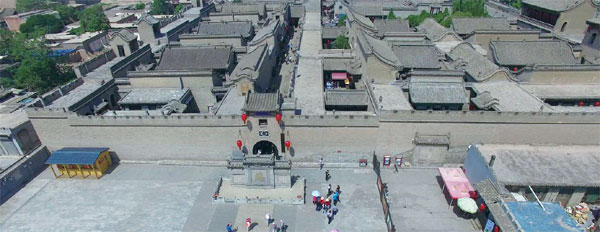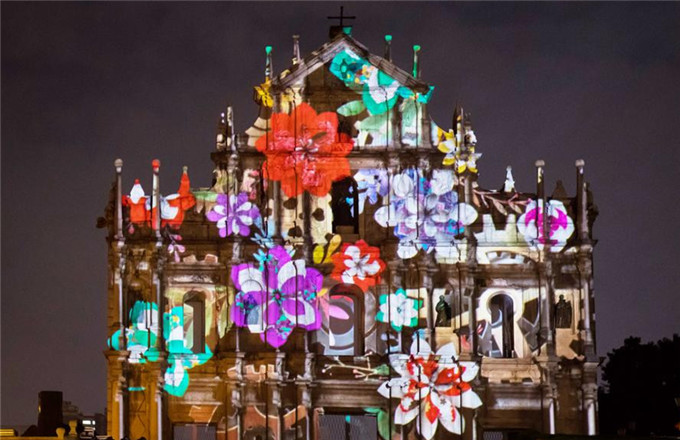On a green carpet through time
One of the first things Chinese are apt to think of when talk turns to Shanxi is coal. That's because the province is full of the stuff, and for many a year its economic prosperity has been intricately intertwined with what comes out of the ground.
However, anyone thinking about visiting Shanxi should quickly disabuse themselves of the idea that what awaits them is a series of bleak coal fields.
Instead, prepare yourself for an adventure that will take you back to several Chinese dynasties even as you lap up the scenery - much of it cloaked in sumptuous green. For those traveling from Beijing, it is a mere three and a half hours away by high-speed train.

The province's name literally translates as west of the mountains, reflecting its proximity to the Taihang Mountains. The province has a population of 36 million in its 156,000 square kilometers, whose diversity takes in its sprawling natural beauty and rich cultural heritage as well as its modernity and industrial firepower, epitomized by the capital, Taiyuan. This city has a special place in Chinese history, having been an important region in northern China during many dynasties.
For those looking for a touch of the old, one place to go is the ancient town of Pingyao, 80 km to the south, listed as a World Cultural Heritage Site in 1997.
With Langzhong in Sichuan province, Lijiang in Yunnan province and Huizhou in Anhui province, Pingyao is one of China's four well-preserved ancient cities. It was built during the Western Zhou Dynasty (c. 11th century-771 BC).
Mercifully, Pingyao has escaped the commercialization that has blighted other ancient Chinese cities, and it is impossible to miss the history that seems to manifest itself along every meter and from every pore of the 6.4-km-long, 12-meter-high city wall, and from the gray bricks and tiles of the many buildings that have survived wars and natural disasters.
The city has more than 300 historical sites and 4,000 historical homes, and strict controls are enforced to ensure that everything is preserved.
In the city center, you can see a complete government office from feudal China in which the county magistrate lived and dealt with government affairs.
During the Qing Dynasty (1644-1911), Pingyao was a gathering place for merchants from all over the country as well as a distribution center for goods.
Helping to keep the wheels of commerce turning then was the Rishengchang Exchange Shop, regarded as China's first bank to use drafts, paper-based cash, instead of metal currencies.
These days, the Rishengchang shop is the Piaohao Museum, which has a business hall, VIP room, an accounts office and staff living quarters.
During the Ming (1368-1644) and Qing dynasties, merchants from Shanxi traveled all over China and even into in Siberia to trade.
While Pingyao provides an insight into the lives of merchants who traded tea, salt and other commodities, in Qiao's Grand Courtyard, about 50 km north of Pingyao, you can get a close look at the life of a merchant who became immensely wealthy.
The residence of the famous Qiao merchant family was first built during the reign of Emperor Qianlong (1736-95), by its first owner, Qiao Guifa, an orphan who made good by trading in major Chinese cities.
In Qiao's Grand Courtyard there are displays giving visitors an insight into a family's daily life and business empire. In more recent times, Qiao's courtyard was where the film director Zhang Yimou shot his award-winning film Raise the Red Lantern.
Another courtyard nearby, Wang's Grand Courtyard, first built more than 300 years ago, showcases what life was like for a family that emerged as successful merchants and became government officials.
If you want to delve even deeper into history, the place to go to is Xiangfen county in Linfen, about 160 kilometers south of Pingyao, where the Taosi Ruins are located.
These are believed to have been the location of the capital of legendary Emperor Yao.
About 70 km southwest of Pingyao is Mianshan Mountain, about 2,500 meters above sea level, a paradise for those who love nature and ancient temples. In addition to plants and waterfalls, spotting a monkey will underline how far away from big-city living you are.
Not far from Mianshan is Zhangbi village, where visitors can learn about ancient Chinese astrology, and there is a tunnel once used for military defense.
Contact the writers through liuzhihua@chinadaily.com.cn


















